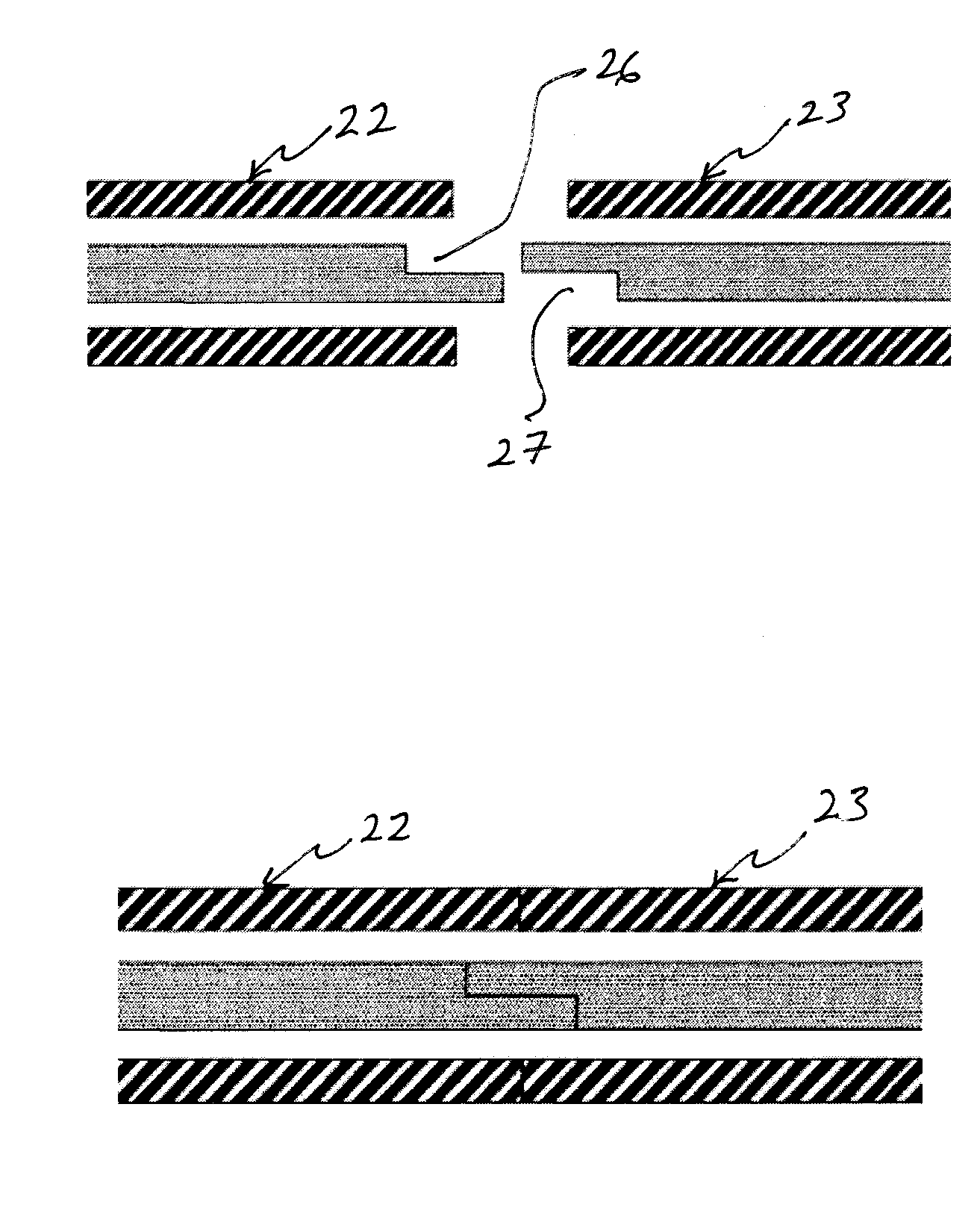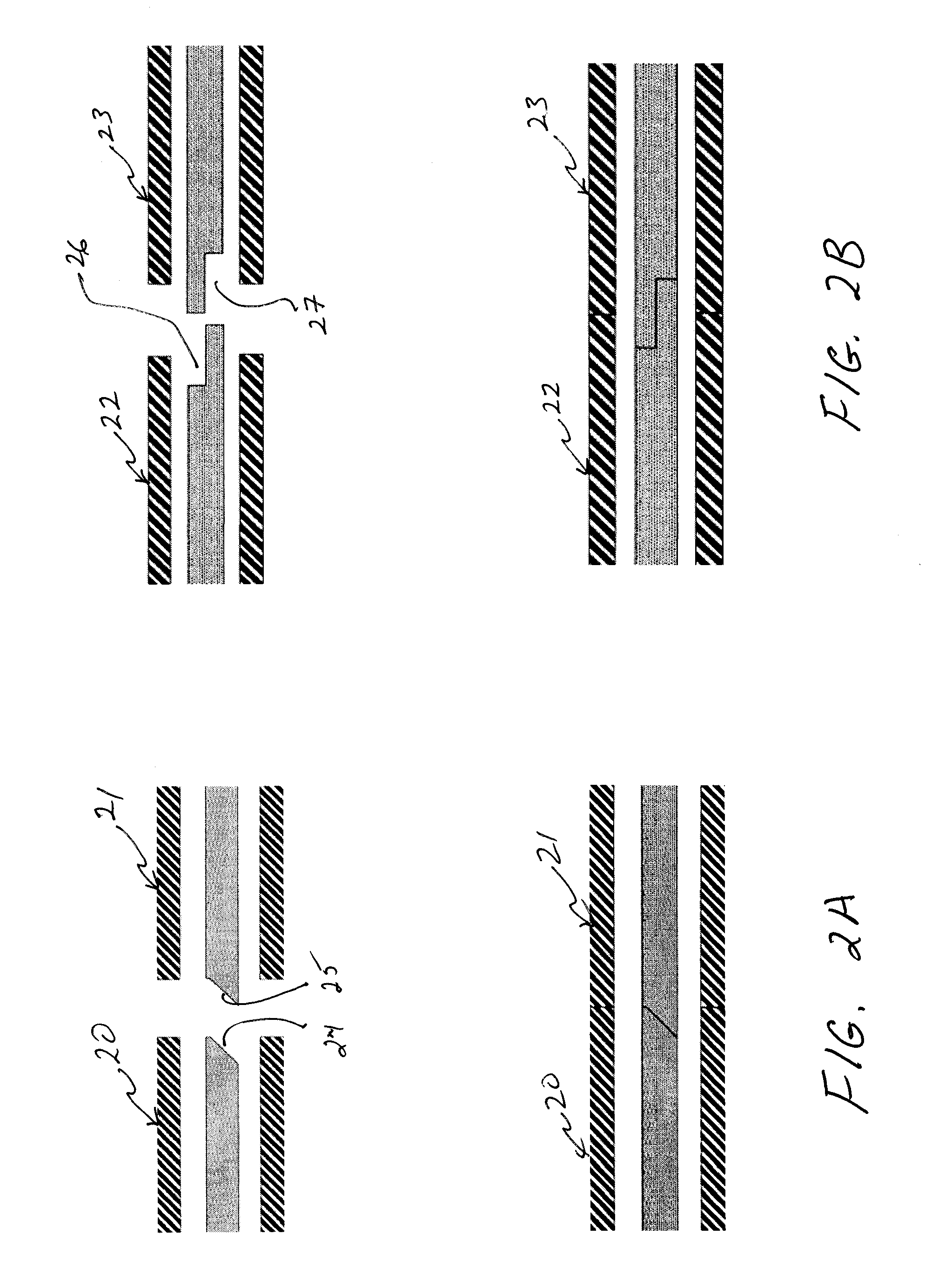In building complex multilayer electronic and electro-mechanical systems, particularly those of
high complexity, and high value, there remain challenges in building said systems with sufficiently high yield and or low re-work to produce said systems economically.
For example, the desktop computer industry approached a similar but larger volume problem since at least the 1980s by creating motherboards and computer
daughter cards with standardized connectors where the card and
motherboard could be electrically and mechanically joined by one plugging into arrayed connectors and then being mechanically fastened to a
metal chassis, for example, by screws.
This problem however is less straightforward for systems where one or more of the size, complexity, integration, weight, performance, or cost of desired
interconnection becomes a
limiting factor to produce the desired
system.
Even cooling such systems, for example in the aforementioned desktop computer, can remain a challenge, since
forced air by using multiple fans become a difficult method to remove heat from all locations necessary.
This trend of pushing so much desired functionality into densely integrated chips which are often permanently attached, combined with a rapid
obsolescence rate has made it almost commonplace to dispose of the
system if it fails; repair is too complicated and / or the cost of such repair exceeds the value of the
system.
Compare this situation to one where the value of the components or chips or modules are very high but one or more of the integration density, size, weight, yield, performance and price are limiting factors, such that
rework and
modularity are required.
Add to this the inability for any single
semiconductor technology to provide all the performance or functions desired, or there simply being added constraints that make it impractical to integrate all the functions intimately into a
chip or
wafer level process.
For example, a
microwave phased array requires many functions, levels of interconnect, routing and distribution of signals and power, and require sophisticated
engineering for heat dissipation, particularly as frequency increases and the dimensions available decrease.
The area it needs to consume is based on performance limitations of its transmit / receive elements, but are also limited by the frequencies / wavelengths of its operation.
However solving the challenges of
modularity and
rework when size and performance and even mechanical requirements of the necessary interconnect remains unsolved.
Currently
microelectronics approaches similar commercial problems using methods such as
chip-stacking technology, through-substrate vias, tiered wirebonds, and in some cases attempts to integrate more than one
semiconductor technology onto a single
wafer.
While these approaches may solve certain problems in volume production for
reduced size, weight, and
interconnection, they are not technologies that readily lend themselves to lower volumes, particularly where it is desired to have relatively un-compromised performance,
rework, or modularity.
A further problem in existing electronic and electromechanical systems relates to
chip or component interconnects.
Independently fabricated and integrated connectors have the
disadvantage of consuming substantial volume, size and even weight compared to the dimensions of chips and PolyStrata® integration substrates.
In addition when many such interconnections are needed, substantial joining force and size mismatch become a
limiting factor, for example in connecting dozens or hundreds of RF and DC interconnects.
As frequency scales to mm-wave and beyond, loss and mismatch also become greater problems.
Those interconnections based on solder joints have the
disadvantage of often requiring the reflow of the solder to ensure a stable DC and RF junction that for example can allow testing or use in the field.
Such reflow on a small scale becomes a challenge as, in increasingly small areas, limiting the flow or wicking or
capillary action of the solder—as well as maintaining a thermal solder reflow or bonding hierarchy that doesn't interfere with the attachment of nearby chips or other components or modules—becomes difficult to manage.
Also solders in substantially small volumes become difficult to control compositionally due to mechanisms such as interdiffusion and consumption of noble metals and
diffusion barriers that may be applied in the junction regions.
 Login to View More
Login to View More  Login to View More
Login to View More 









